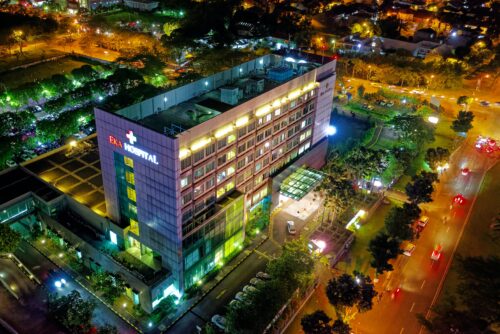Taking measures to strengthen your grateful patient fundraising can help your hospital raise significantly more money.
Healthcare fundraising is not rocket science. Like all fundraising, planning is key, and knowing your donors is key.
Here are five things you can work on today to ensure your grateful patient fundraising is on the right track.
#1: Review your database regularly to see who gave to your hospital in the past and steward them.
Why is stewardship number 1? The largest gifts you receive will be from grateful donors who already give. So if you don’t know who those people are or don’t have a relationship with them, it’s time to get to work. Find them and assign a gift officer to work with them.
#2: Make sure there’s a referral process for referring grateful patients.
Do your physicians understand what grateful patient fundraising is? Do they understand that they don’t need to be the fundraiser, and that working with an assigned gift officer can prove invaluable? Make sure physicians understand how to look for clues on capacity and gratefulness when working with patients, and make sure they are very clear on the process of referring a potential donor to a gift officer.
#3: Gift Officers should receive training.
Make sure they are trained on how to develop relationships with physicians and teach them how to work with prospective grateful patients. Accountability is also important, so be sure to check in with gift officers regularly to make sure they are working through the process. Gift officers should not be micro-managed, but they should be supported and held accountable for making progress. Everyone is happier with clear expectations.
#4: Always be cultivating buy-in from your leadership.
If fundraising is important to your leaders, then everyone in the hospital or organization will know that fundraising is a priority. Spend time with your leaders, set goals, and provide talking points for them. Then repeat. Fundraising messaging from leadership should not be a one-off affair at a gala or United Way event. Their support is integral to the process. When the captain of the ship repeats fundraising goals and objectives throughout the year, a culture of giving will begin to develop.
#5: Be patient.
Don’t expect immediate success. Relationships take time. It takes time to develop a grateful patient fundraising plan, develop a strategy, and create a system that gift officers and physicians can follow. And it takes time for gift officers to get know potential donors. Successful healthcare fundraising requires patience. Remember, strong relationships with donors benefit everyone when the time is right for donors to make a gift.
If you don’t have a grateful patient plan in place, or would like to learn more on how your healthcare institution can raise more money, please sign up for our free healthcare fundraising webinar on November 19 here.
To learn more about the services we provide and how we can help you, shoot me an email at othomas@americanphilanthropic.com or take a look around our website at www.americanphilanthropic.com.






